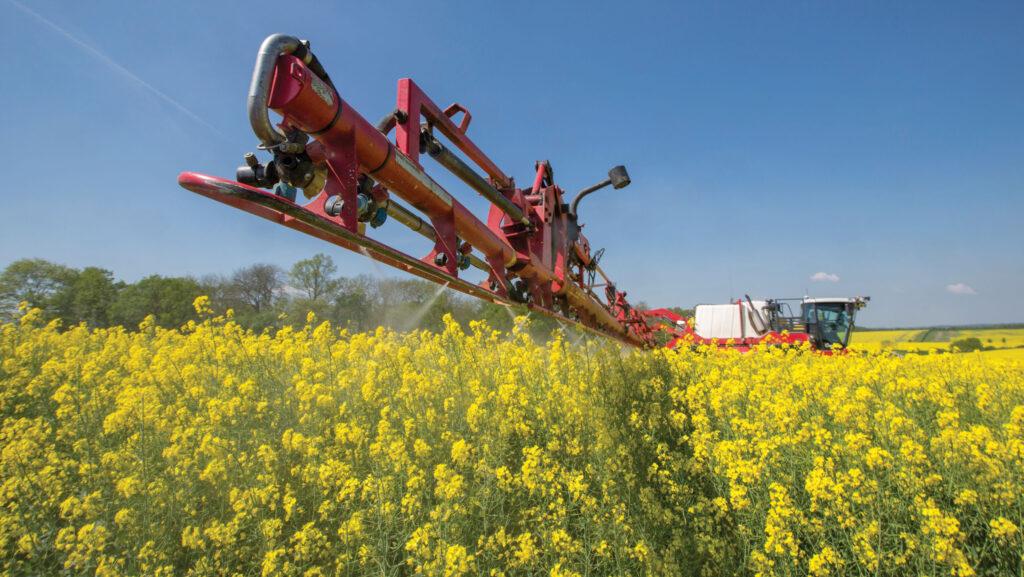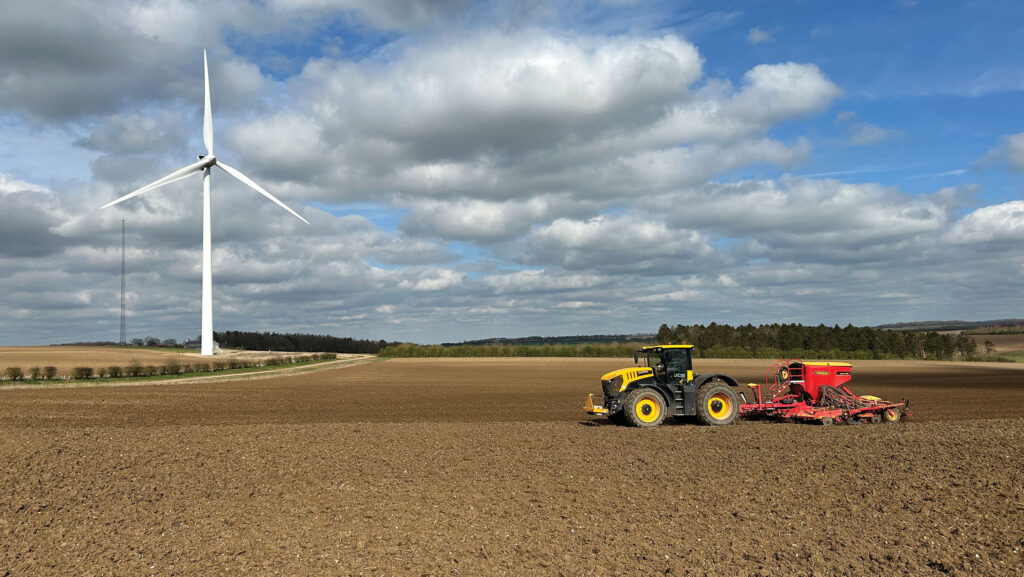How to set up a farm machinery sharing syndicate
 © GNP
© GNP As farmers transition to more resilient systems, greater scrutiny is applied to fertiliser, seed, herbicide and other agronomy costs, but is that same degree of analysis applied to machinery outlay?
Gary Markham, director at rural tax advisers and accountants Land Family Business, reckons not.
“Farmers will look at the pence per acre cost of some herbicides but not the huge raft of costs they are incurring per acre for machinery. They don’t often know how much money they have tied up in machinery.”
See also: How two farmers are cutting back on fungicides this spring
Poor returns from the 2023 harvest are forcing a change of mindset. The average machinery capital value among the clients his business benchmarks stands at £352/acre, up from £250/acre in 2019.
As well as that big upsurge in cost, there is depreciation to consider. “If the machinery capital is £352/acre and its value reduces by an average of 18% a year, that is a £63/acre direct annual cost for the business,” Gary calculates.
“With wheat prices down by £100/t on average on 2022 prices, that situation is just not viable. At best, farmers are breaking even, if not losing money.”
Sharing machinery on a formal basis, through a syndicate, offers a solution. Gary offers the following up-to-date guidance on these.
Syndicate structure
Structure a syndicate as a limited liability partnership (LLP), not a limited company, because it will give more efficiency for managing the tax reliefs available on machinery purchases.
Never establish the syndicate in the form of a partnership as this introduces unnecessary liabilities, including financial, to all parties.
Having a share farming agreement as a “top tier” agreement to the LLP offers an additional layer of beneficial mutual responsibility over and above a standalone machinery sharing agreement.
If both parties are farming as one, they are unlikely to fall out over issues such as who is going to have access to a machine and when because they have a shared interest in getting the job done as well as they can.
It avoids potential tensions and conflicts that can come from simply pooling machinery, even when that is done formally.
Environmental agreements
One of the growing changes in emphasis for syndicate managers is the need to consider environmental scheme participation.
Syndicate members increasingly need to take land out of the machinery agreement to farm it under an environmental scheme.
Gary says they have had cases where a member might want to take land out of crop production because it is poorer quality and they want to utilise it differently to capture environmental payments.
But that creates unfairness for fellow syndicate members because it changes the cost-sharing percentage initially agreed.
To remove that element of unfairness, the agreement should allow for cost adjustments to be made over a period of years, across an agreed minimum acreage.
It might be that in the first year, the farmer taking the land out pays the full costs, in the second year their share reduces by a certain percentage, in the third year it reduces again, and by year four, the land is taken out of the agreement altogether.
This allows the syndicate time to deal with that adjustment.
As well as environmental schemes, Gary has seen this situation arise when a farmer enters into an agreement to grow maize for a nearby anaerobic digestion (AD) plant.
As this needs a specialist drill and the harvesting of the maize is a separate job, it falls outside the remit of the agreement, therefore the maize land may need to be removed.
Tax considerations
As sales of excess machinery are taxable, it could be a huge barrier to an individual business from entering a machinery syndicate.
That is because balancing charges are applied when machinery is transferred to the syndicate or a piece of kit is sold off because it is surplus to future requirements.
Annual Investment Allowance (AIA) at 100% is likely to have been claimed on the purchase of that machinery, making its tax value nil.
When this machinery is transferred or sold, a taxable profit can arise, which usually equates to the value of the machinery.
In the case of a combine harvester, that could be £500,000, so it is really essential to do your tax homework and consider all the implications first.
But it is possible to transfer the machinery the syndicate members want to use jointly into the LLP without a tax liability.
The occasions when Gary has seen problems arise are when advisers have not consulted accountants with relevant experience in setting up these agreements.
It is a specialist area of tax planning so it is really important to get the right advice.
Within an LLP, the tax reliefs for machinery are available to the members and that structure allows them to use potential losses to offset tax liabilities, which would not be possible as a limited company.
Apportioning costs and income
In a standard agreement, all costs are shared on a percentage basis according to the number of hectares farmed. But there should be terms that allow for adjustments to be made in certain situations – for example, if the efficiency of operations is poorer on one farm.
This might be the case when one farm has 10 five-acre fields with narrow gateways, which makes it a struggle to get machinery in and out so everything takes longer.
In this situation, an adjustment should be made to the percentage of the costs incurred – that farmer might pay 5% more of the costs perhaps.
Another nuance that needs to be accounted for is differentials in yields per hectare achieved on each farm.
One farm might have a lower yield due to a poorer soil type, so the terms should allow for that adjustment to be made when the crop is apportioned in the share farming agreement.
These points and others should be discussed before an agreement is set up – it is a case of talking through every eventuality and everything that could possibly go wrong beforehand.
Legal considerations
Always include a clause in the LLP that prohibits the parties from suing the LLP for any damages incurred on a farm – for example, if part of a headland is ploughed up.
Case study: Anthony Wiseman, Essex
What started as four neighbouring cereal growers with 1,700 acres forming a machinery sharing syndicate has developed into a joint venture LLP between 10 farms with a combined arable acreage of nearly 5,000 acres.
In 2000, Essex farmer Anthony Wiseman invited his neighbours to collaborate with him by sharing machinery across their businesses.

Anthony Wiseman © Anthony Wiseman
“We were duplicating machinery and I thought there must be a better way of doing this,” he says.
His neighbours agreed and they dispersed with their surplus machinery, selling 150 pieces of kit, buying in just 10 and merging as AWT Farm Services LLP.
“Although we were farming separately, we used all the economies of scale that the syndicate allowed – one combine, one set of cultivation equipment – but kept our own sprayers,” Anthony recalls.
Joint venture LLP
Four years later, when another farmer joined, the agreement went a step further with the formation of a joint venture LLP, and the businesses farming as one while splitting costs and gross margins according to acreage.
The grain they harvest is stored at Camgrain and marketed through its marketing partners, Frontier and Robin Appel.
“If a member has 20% of the acreage in the joint venture, they receive 20% of the output,” Anthony explains.
One member has since left, receiving payment according to the valuation of the machinery and his acreage, and others have joined, which demonstrates the flexibility of the model, he adds.
“We have tried to keep it simple – we require member commitment but it should be simple for someone to join or leave.
“The LLP was very well set up by Gary Markham and Roythornes.”
That discussion is needed from the outset, with basic rules that members must observe, he advises.
“If you are financing a machine over five years, you do need people to commit to it, very similar in fact to what you might expect from working collectively as a grain co-operative.”
Two farmers have joined as associate members, paying only a contracting charge to AWT Farm Services.
That brings to 10 the number of farms involved, all based in Essex and Suffolk, a mix of owned, tenanted, farm business tenancies and contract farming agreements, with 40 miles separating the two furthermost apart.
“AWT has been operating for 24 years, starting when wheat was £60/t, and has flourished as it tries to keep down fixed costs and return good margins to all parties,” says Anthony.
Although the economies of scale that the agreement afford are a big advantage, there are others too, he points out.
“Unlike a contract farming agreement, it doesn’t matter where we are working because if the combine is operating on one farm, it is operating for us all.”
Working as one also frees up the time of individual members to grow other aspects of their business, with some developing their yards for diversification enterprises, while others have stepped back into semi-retirement, he adds.

© Anthony Wiseman
“Those who are not doing the hands-on farming can relinquish day-to-day management.”
For Anthony, a tenant farmer farming 1,200 acres under various agreements, it has brought its own form of diversification.
He is paid by AWT Farm Services to manage the arable work, and another manager, Dan Jones, who is Basis and Facts qualified, has been drafted in to work alongside him, bringing a new skill set.
“And some much needed youth,” Anthony adds. “It will mean that I can look into the new environmental schemes across the group, so that we are not missing out on those opportunities.”

